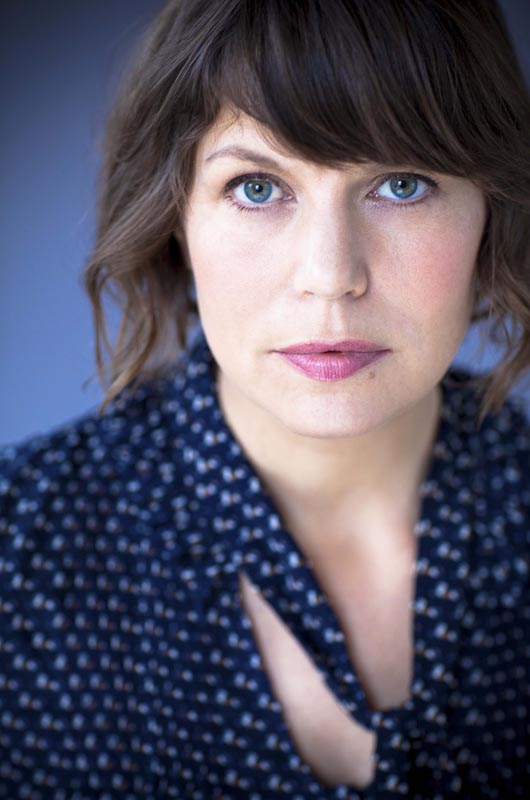Tragedy has a way of striking its targets indiscriminately. No family, no matter how privileged, and no place, no matter how magical, is immune.
Welcome to the world of We Were Liars, a young adult novel where illusion covers the wealthy Sinclair family like a thin veil, threatening to disintegrate it at any moment.
It’s a dark, suspenseful story of adolescent privilege and pain, with Cadence Sinclair Eastman at its center, an emotionally damaged teenager who lives with her mother in Burlington, Vt. But most of the story’s intrigue takes place on a private island off Martha’s Vineyard, where Cadence and her relatives spend their summers.

The island, which author and longtime Vineyard visitor E. Lockhart names Beechwood, has only four houses and no cell reception, and is accessible by motor boat from Woods Hole and Edgartown harbor. Each summer, Cadence and her cousins, who are together nicknamed the Liars, make the island their playground, forming intense bonds with each other and cavorting in all the appropriate teenage ways.
These are summers of night swimming and fudge-eating, of Scrabble-playing, snorkeling and kayaking.
In this respite from everyday life, the characters get a chance to reinvent themselves and disconnect from technology, author E. Lockhart said in a recent interview with the Gazette.
“The isolation of the island allowed me to throw these people together year after year,” Ms. Lockhart said. “It’s only nowadays in offshore locations or high altitude locations where your cell service gets messed up. It allowed me to unwire my characters.”
We Were Liars has all the trappings of a fairy tale; three daughters “made for princes and Ivy League schools,” old family money and an isolated setting free from the evils of the outside world.
“Once you are there, the rest of the world feels like an unpleasant dream,” Cadence muses.
But soon, Ms. Lockhart tears this dream world apart. She said in the canon of summer house books, there are two options.
“Some allow you to enjoy the summer house fantasy without disruption and others shred it into bits by the end like House of Mirth,” she said.
Her book fits squarely in the latter category.
“The challenge was how to write a story where you set up a fantasy and then break it apart and interrogate it,” Ms. Lockhart said of the process of writing the book.
The Vineyard plays a supporting role in the story; the role of mainland, where the characters travel for a dose of civilization. (“To get online you have to go to the Vineyard.”)
On one such excursion, Cadence visits the “nautical, sweet pie village” of Edgartown with her grandfather, stopping in a bookstore, and perusing the art galleries.
Not everything in this book is make-believe. Ms. Lockhart began visiting Chilmark as a child in the early 1970s, and she references several Vineyard haunts by name, including Murdick’s Fudge, the Edgartown fireworks display and the Martha’s Vineyard Hospital. Even the Farm Institute, a teaching farm in Katama, makes a cameo. Cadence reminisces about the annual benefit party there, an outdoor tented affair.
Ms. Lockhart’s children attended the summer camp at the farm, and after seeing the field set up for the annual Meals in the Meadow fundraiser, she let her imagination wander.
Readers have told her they like seeing these familiar places through the lens of fiction.
“There is a pleasure in seeing a beloved landscape in a novel,” she said.
The main narrative is punctuated by fairytale-like vignettes, which include retellings of Shakespeare’s King Lear, a central metaphor in the story. Cadence’s mother is one of three sisters who fight for their father’s riches.
“I suppose that the fairy tales that are interspersed are ways that Cadence, the main character, finds to say what she thinks is unspeakable,” Ms. Lockhart said.
The Sinclairs are attractive, old money Democrats who take pains to conceal their emotion, even under tragic circumstances.
“I was interested in a family that might be considered American royalty,” she said. “I wanted a chance to undercut and explore what that notion was.”
This is Ms. Lockhart’s ninth book, but it is the first that has made the national bestseller list. It has also sold in 15 foreign countries, Ms. Lockhart said.
We Were Liars is officially a young adult novel, but the book has attracted an older readership as a result of a targeted marketing scheme, she added.
Mature readers are also no doubt compelled by the sophistication of its narrative, which strings the reader along a roller coaster narrative that ends in a dramatic plot twist.
“I do have a sense that readers have a lot to talk about when they are done with the book, that they can have a really great argument for two hours about the book,” she said. “That makes me happy.”
She said she doesn’t have all the answers, despite having created it.
“All books have a life of their own,” she said.






Comments
Comment policy »